Non-Fiction Text Structures
How are you doing with teaching non-fiction, informational texts? Do you feel you have a good grasp on expository text structures? With the Common Core ELA standards, students are expected to be proficient in reading complex informational texts. State assessments are also becoming more non-fiction focused, to evaluate student abilities in navigating these complex texts. So what can we do to help our students meet these standards?
The purpose of this post is to provide a few resources for teaching non-fiction, in preparation for the higher levels of achievement students are expected to reach! The ideas shared are perfect for upper primary grades, but can be easily adapted for earlier grade-levels. It is never to early to introduce non-fiction, so even if you are Kindergarten teacher you can start exploring the structures and helping your students build a foundation for content-area learning!
The Non-Fiction Text Structures
What are text structures?
Non-fiction text structures refer to HOW an author organizes information in an expository text. When faced with a new text, students can observe the organizational pattern of the text and look for cues to differentiate and pinpoint which of the text structures was used by the author. Students can then organize their thinking to match the structure of the text, allowing for effective comprehension of the subject matter.
Why are the text structures important?
Understanding non-fiction text structures is critical for “Reading to Learn” (i.e., reading for information). Students should be familiar with the five most common text structures and should be able to identify each structure using signal words and key features. Understanding which text structure is used helps students monitor their understanding, while learning the specific content that is presented. These text structures need to be explicitly taught in the classroom.
Introducing the Text Structures
It is important to note at this point that students need to understand the difference between fiction and non-fiction BEFORE jumping into learning about text structures. Please make sure your students have a good grasp of fiction/non-fiction features and can easily identify both.
There are five main text structures:
Description:
- Sensory and descriptive details help readers visualize information. It shares the who, what, where, when, why, and how of a topic/subject.
Sequence & Order:
- Sequence of Events: Chronological texts present events in a sequence from beginning to end.
- How-To: How-To texts organize the information in a series of directions.
Compare & Contrast:
- Authors use comparisons to describe ideas to readers. Similarities and differences are shared.
Cause & Effect:
- Informational texts often describe cause and effect relationships. The text describes events and identifies reasons (causes) for why the event happened.
Problem & Solution:
- The text introduces and describes a problem and presents one or more solutions.
(Want a copy of the Non-Fiction Text Structures Student Reference Sheet? It is FREE download in my TpT store and also in my FREE resource library. If you’re already a subscriber, you may download the resource HERE.)
As with most concepts and skills, students benefit greatly from modeling and practice! Becoming familiar with text structures involves interaction with a variety of informational texts. Perhaps you can begin with a book pass or non-fiction literacy centers to build their schema of non-fiction text structures. With these activities, students preview texts, make observations, and share their findings. To prepare, you will need to select a variety of books ahead of time for each text structure to place among the chairs (book pass) or stations.
(Subscribe to download this FREE Building Schema with Non-Fiction Text Structures Student Graphic Organizer. If you’re already a subscriber, you may download the resource HERE.)
Once students have interacted with a variety of books exemplifying each of the non-fiction text structures and have had the opportunity to build their schema by making their own observations, you should then explicitly teach the text structures individually!
Some teachers prefer to teach text structures as ELA units (one day/week/month per structure), whereas some teach these in conjunction with non-fiction writing. It is your choice, so customize the instruction to meet the needs of your classroom! Keep in mind… the resources shared here are resource alone, and do not provide a program for instruction.
Digging Deeper into Text Structures
After students experience different text structures and organizational patterns, you should introduce one text structure at a time. Introduce each using a mentor text and by showing students how each text structure will guide them in collecting information. Through modeling and practice, students will learn which graphic organizers correspond to each text structure and how to complete them.
According to AdLit.org, teachers should teach text structures as a strategy for comprehension. A few ideas include:
- Showing examples of different paragraphs/texts that correspond to each text structure
- Examining topic sentences and key words that clue the reader in to a certain text structure
- Modeling using text clues to identify text structure during a text preview
- Model using graphic organizers to collect information
- Students use graphic organizers for each text structure to collect information.
- Model the writing of a paragraph that uses a specific text structure
- Students write a paragraph using a specific text structure
Analyzing Text Structure
The ultimate goal is for students to know how to analyze text to identify the text structure and choose the appropriate graphic organizer to go with it. Analyzing text involves previewing a text to observe the organization, features, key words, and any clues that may be helpful in determining text structure. A step-by-step guide may be helpful at first, to walk students through this process!
 (Subscribe to download this FREE Analyzing Non-Fiction Text Structure Student Guide. If you’re already a subscriber, you may download the resource HERE.)
(Subscribe to download this FREE Analyzing Non-Fiction Text Structure Student Guide. If you’re already a subscriber, you may download the resource HERE.)
Students should also explore the common signal words and topic sentences that correspond with each text structure. Being able to identify signal words quickly during a quick scan of the text will help tremendously in preparing students for information collection. Use my text structure reference sheet to remind students of the signal words they may find for each text structure!
Writing with Text Structures
To reinforce student understanding of non-fiction text structures, consider bringing an informational text writing unit into your Writing Workshop! Students can study non-fiction as a genre of writing, and use various mentor texts as models for good non-fiction writing. After studying the key features and vocabulary of each text structure, students can practice integrating the structures into their own writing.
Retelling Non-Fiction Using Text Structure:
Are your students able to identify the text structures but not sure how to use them to retell an informational text? Do they retell non-fiction texts out of order or with a “bouncing brain”? Learn more about how I teach my students to retell non-fiction in my blog post Retelling Non-Fiction Using Text Structures. Free sample materials are included!
Assessment
Assess their knowledge of text structures using writing and informal assessment activities.
For example, students can complete a sort, matching the definition with the text structures to show their understanding of each of the five text structures. (An example is shared below!)
(Subscribe to download this FREE Scramble N’ Sort Student Practice/Assessment. If you’re already a subscriber, you may download the resource HERE.)
Additional Resources
Here are some websites and activities that may be of some help! Many are for upper grade-levels, but feel free to adapt materials to meet the needs of your students.
Lessons & Ideas:
- Text Structure Resources (Literacy Leaders)
- Lesson Ideas & Sequence (AdLit.org)
- Introducing Text Structures in Writing (Utah Education Network)
- Retelling Non-Fiction Using Text Structure
Blogs:
- Text Features & Structure (This Reading Mama)
- Nonfiction Text Structures (Teaching My Friends)
Activities:
Florida Center for Reading Research (FCRR):
Additional Resources:
If you are looking for additional materials to support your instruction of non-fiction text structures, check out the resources I have created for each! Each instructional resource includes student posters/reference sheets, an original poem, graphic organizers, and student prompt cards.




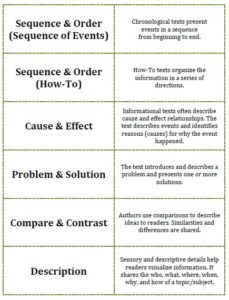
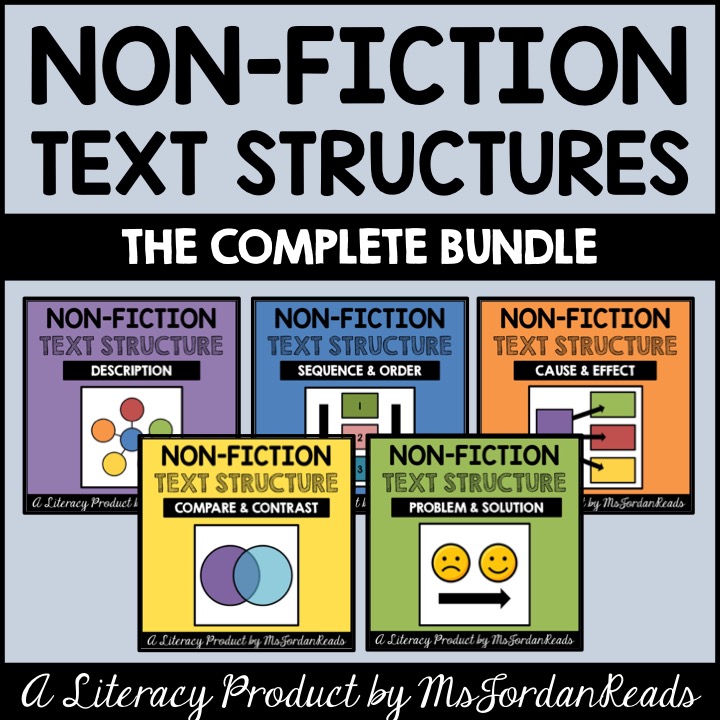

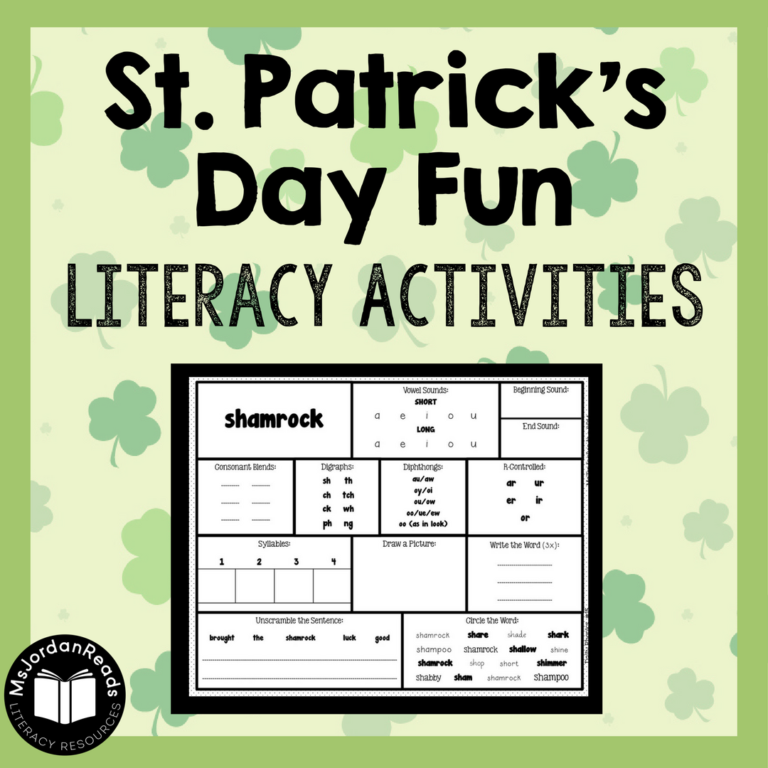
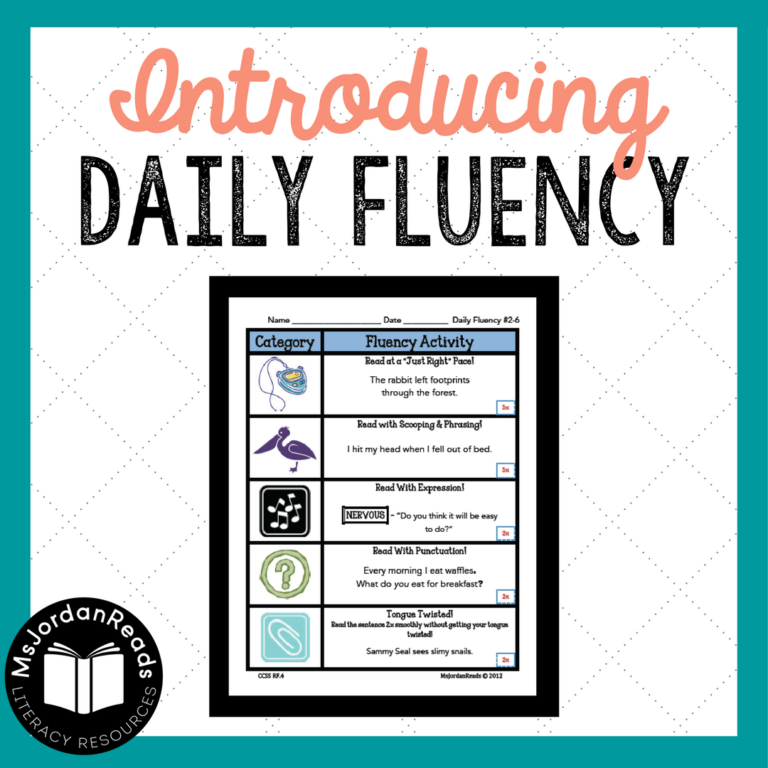
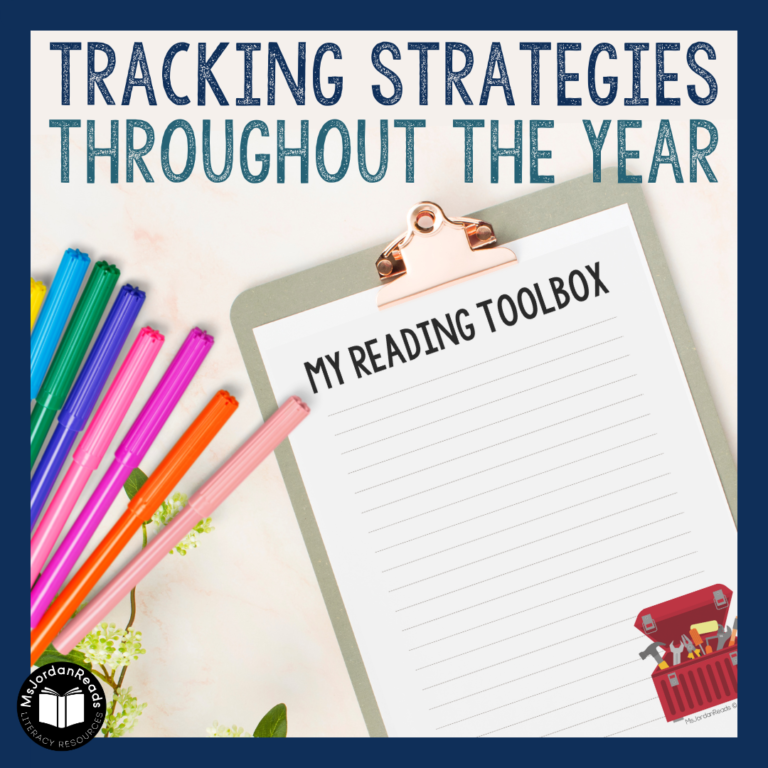

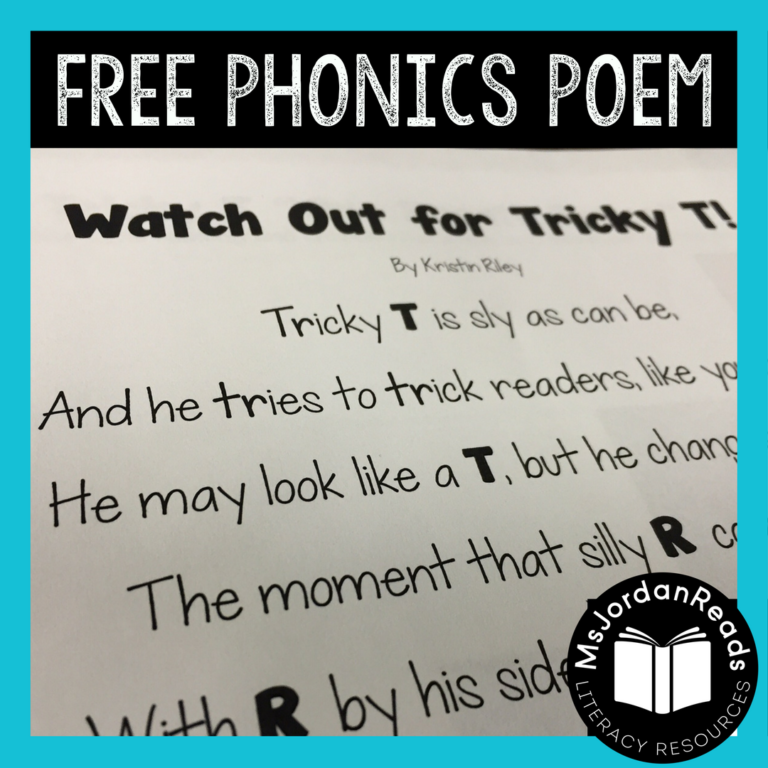
I used picture books to teach nonfiction text structures in my 6th grade classroom this year along with a book I purchased titled Non-Fiction Text Structures for Better Comprehension and Response. We are currently studying ancient Egypt and I have collected several picture books to go along with this unit. Every book we open that is nonfiction, we determine its structure.
Also, the series “You wouldn’t want to be: (an egyptian mummy, on a viking ship, etc) is great for teaching these structures.
You are one of the lucky winners of my five Non-Fiction Text Structure packets! I will be emailing you in the next day or so with your products! 🙂 Thanks for sharing the “You Wouldn’t Want to Be…” book series too. I just added many titles from the series to my “Book Room Wish List” for my building.
Thank you, thank you, thank you! I am so excited…I am normally not a winner when it comes to contests. I am excited to get your materials to use and am so glad to have mentioned a new series for you. I just learned about them at the NC Reading Conference in March.
I have shared your blog with many and placed a link to it from my facebook page.
Thanks again!
Randy
themiddleschoolmouth.blogspot.com
As library teacher for k-4 school, I use non-fiction vs fiction in practically every lesson concerning the library, especially when teaching library organization and the Dewey Decimal System we use.. Thanks for this chance to win!
As a 4/5 looping teacher in a high poverty and large ELD population school, I focus a lot on basic fluency and comprehension/retell skills, but I have also been using a lot classroom magazines and nonfiction materials. My students are very well practiced in using subheadings, pictures, diagrams, and how to find the main idea and important details in texts, but I really want to do more with exploring the actual text structures to improve both their comprehension and their writing skills. These are the types of resources that would greatly benefit my class’s literacy skills. Thank you so much for the opportunity to win these fabulous books.
You are one of the lucky winners of my five Non-Fiction Text Structure packets! I will be emailing you in the next day or so with your products! 🙂 Thanks for participating!
First, I would like to say “thank you”. You have inspired me to take an extra step in my daily teaching. I am a NBCT, and still struggle with finding reading strategies worthy of what little time I gave in my classroom. Living in a rural county with over 80% of the population qualifying did free/reduced lunch, u find myself stuck in a rutt of teaching vocabulary. I use as much non-fiction texts as possible (with visuals) because my students are lacking in background knowledge. I can see me utilizing these graphic organizers in my classroom this week! Thank you for sharing your knowledge with others.
AMAZING Post on Nonfiction Text Structures! Thank you also for linking to me! 🙂
I generally dont teach these text structures. We have a new reading curriculum and there is nothing included for this. We have been advised to follow the text quite rigidly. I will be using this post and resources next year! Thank you!
Great post! Definitely a 5-Star Blogger! Thanks for linking up!
Charity
The Organized Classroom Blog
http://balancedtech.wikispaces.com/Toolbox+-+Standard+Essay
Thanks, time for me to rethink the ones I use with my students:
Order of importance (or reverse order)
Order of events (chronological)
– Natural order
– Climactic order
– Reverse order
– Flashback
– Spatial order
– Process order
Reasons for followed by rebuttal of opposing view
Classification order/ Order of generality
Causes/Effects
Similarities/Differences (Compare/Contrast)
Examples to idea
Idea to examples
Problem to solution
Wow!!! Incredible information. I teach non-fiction in the confines of our reading series but this is so much better! I will definitely be incorporating this next year as we get ready for the common core standards. Thank you so much for sharing!
Thank you for this blog post. I have used picture books and easy nonfiction to teach structures in 8th grade. I am currently preparing to teach a college level reading strategies class to those who will eventually become intervention specialists. Text structure is one of our topics and I have found your post very useful.
I am a K-12 librarian who was assigned to teach 8th grade reading skills. I had to put in about 1,000 hours to prepare for it. This bookmark would have helped. But I need to mention two sources that changed the students’ world. They went on average from D- to B in their required science class as I implemented the non-fiction reading strategies in these two books: Richardson, Jan. The Next Step in Guided Reading. Scholastic, 2009. And, Robb, Laura. Teaching Guided Reading in Middle School, Scholastic, 2010.
They both stressed teaching how to ask good questions. Also how to rate questions (QAR.) This made the non-fiction we read spring to life, because the students had a purpose for reading each passage before they began. Then they asked questions during the reading, and then after the reading. It made every lesson fun.
Thank you for sharing your teaching techniques. I must admit that I do not pay enough attention to nonfiction texts. However, your post has given me the practical tools to improve my instruction!
I’m so glad I found your blog! I’m taking a class called “Teaching Literacy in the Elementary Classroom” and for out final assignment I need to plan a reading comprehension lesson that focuses on a text structure. Thank you for posting all these wonderful resources.
I’m new to 2nd grade after many years in fifth, so I’m still trying out ways to teach text structures. We do look for different text features in the nonfiction that we read – Scholastic News has been a good help with this.
I just found your blog & OH MY GOODNESS! I only wish I would’ve found it sooner.
I love the non-fiction text post. You really did a great job of combining links into something usable!
EXCELLENT JOB!
You are one of the lucky winners of my five Non-Fiction Text Structure packets! I will be emailing you in the next day or so with your products! 🙂
WOW! So excited that I have found this blog!!! This will make my text structures next year soooo much better! When I do sequencing I give the students different sentence strips (even sometimes just pictures) and they have to arrange themselves in order to get the story, directions, etc…. Hope I’m one of the lucky winners!
Thanks, for the great ideas,
carrollbaskets@yahoo.com
Due to the great response to this blog post (and over 4,000 views in the last week and a half!), I’ve decided to award THREE winners for this giveaway. Winners were chosen at random using http://www.random.org. Congratulations to Neil Kavanagh, Sharnon Johnston-Robinett, and Randy Seldomridge! You are the THREE lucky winners of my five Non-Fiction Text Structure packets! I will be emailing you in the next day or so with your products! 🙂
Thank you so much!!!! I can’t wait to share the books with my peers at school and start using the ideas in them with my students. It is so good to find great resources when school funding seems to be at such an all-time low.
This was some of the most useful information I have ever found! I am a brand new teacher trying to introduce a non-fiction unit to my 5th graders that this was incredibly helpful!
I’m glad you found my website to be a valuable resource! Keep checking back. I’m always adding new websites and resources that will help us navigate non-fiction and CCSS with our students.
I am trying to revamp the way I teach non-fiction. I found the processes I have used in the past are not as effective as some of the options I have seen on this site. I am hoping to incorporate much of what I have seen here into my new Unit. Thank you for the wonderful suggestions!
I’m glad you found my suggestions helpful! I hope you were able to use some of the new resources in your unit. I would love to hear if there was one in particular that helped you the most!
I’m not a “blogger” but came upon this great site while searching for what else but nonfiction text! I’ll be sure to share all this great info as well as your blog with some teacher friends!
Thanks!
Theresa
5th Grade Teacher
Newark Public Schools
Newark, NJ
I’m glad you stumbled to my blog! Thank you for sharing with your colleagues, too. My goal is to share whatever I can with teachers as we navigate the CCSS and all these new initiatives! Let me know if you have any questions about text structures as you teach them. 🙂
Hello!
I normally don’t post on blogs! BUT I had to let you know that I bought all of your packets from TPT and used them in the unit I am currently covering on non-fiction text structures! I have pulled together your resources on each non-fiction text structure into an activity guide that we are using together in class! It has been great! Thank you for posting! 🙂
I’m so glad that you found my blog to be helpful! 🙂 Non-fiction text structures are hard for students to identify, but once they learn the features of each and how to differentiate between the structures, it helps tremendously with their comprehension. Let me know if you have any questions along the way!
This is great!!! Do you have an assessment that goes along with these lessons?
I don’t have any assessments. Sorry! I typically assess performance with graphi organizers and take notes on their ability to identify text structure. Rachel’s Lynette on Teachers Pay Teachers has text structure task cards I’ve used (multiple choice where students identify text structure of paragraph). Those might be helpful! Sorry I couldn’t offer any more!
Kristin
This is such an amazing website filled with so much useful resources! I wish I would have found it sooner but my kids this year will do so much better because I found this! Thank you!
I am having trouble finding text structure resources for fiction. I need the text structure for fiction stories that are personal experience stories such as Owl Moon. The resources I’m finding are all for fiction problem and solution stories. Can you help me with this? I’ve found resources for nonfiction personal experience text, but not fiction. Thank you so much for all you provide to us literacy teachers!!
I often use Owl Moon as a mentor text for teaching narrative and memoir writing. It would be great for exploring and comprehending fiction text structures, too!
I don’t have a ton of resources for teaching fiction text structures beyond using story elements for retelling narrative texts. (Check out my free “S.T.O.R.Y.” packet for teaching story elements with narrative fiction –https://msjordanreads.com/2012/11/07/s-t-o-r-y-fiction-text-structure/).
If you’re looking for your students to explore different fiction text structures, I don’t have many resources for that. I came across a great blog by This Reading Mama with ideas for teaching fiction text structure. A lot of her focus is on the typical narrative text structures though — http://thisreadingmama.com/comprehension/text-structure/fiction-text-structure/
I’ll have to explore some more for fiction text structure resources. If there’s something specific you’re looking for, let me know! Email me at msjordanreads@gmail.com if you have a need for specific resources.
Kristin
I so appreciate this information! I am not a teacher but I am a parent. My child is home with the flu and received his homework for the week. He could not remember what he’s learned with text structures so I Googled it. I was able to literally sit him down and teach him from the information I gathered from this page. God bless you and thank you for the detailed information. Now my child is able to bring in homework that is correct and accurate when you return to school on Monday.
I’m so glad you stumbled across my blog and found the information to be helpful! Text structures can be difficult for students to learn and identify, and it makes my teacher heart happy to hear that my blog is a valuable resource to you, as a parent! Your child is lucky to a resourceful mom who is willing to work with him. 🙂
Great resources, thank you!